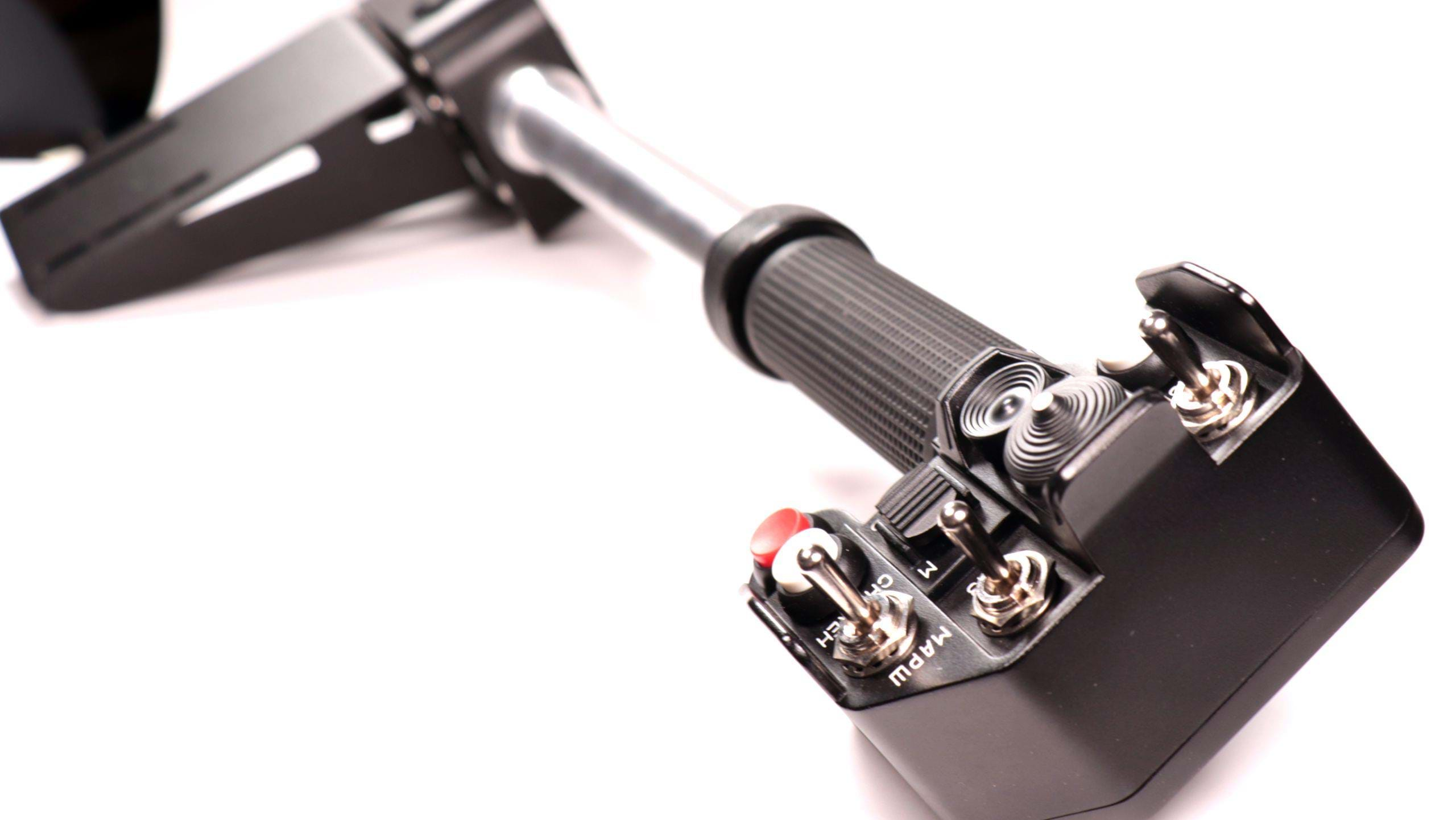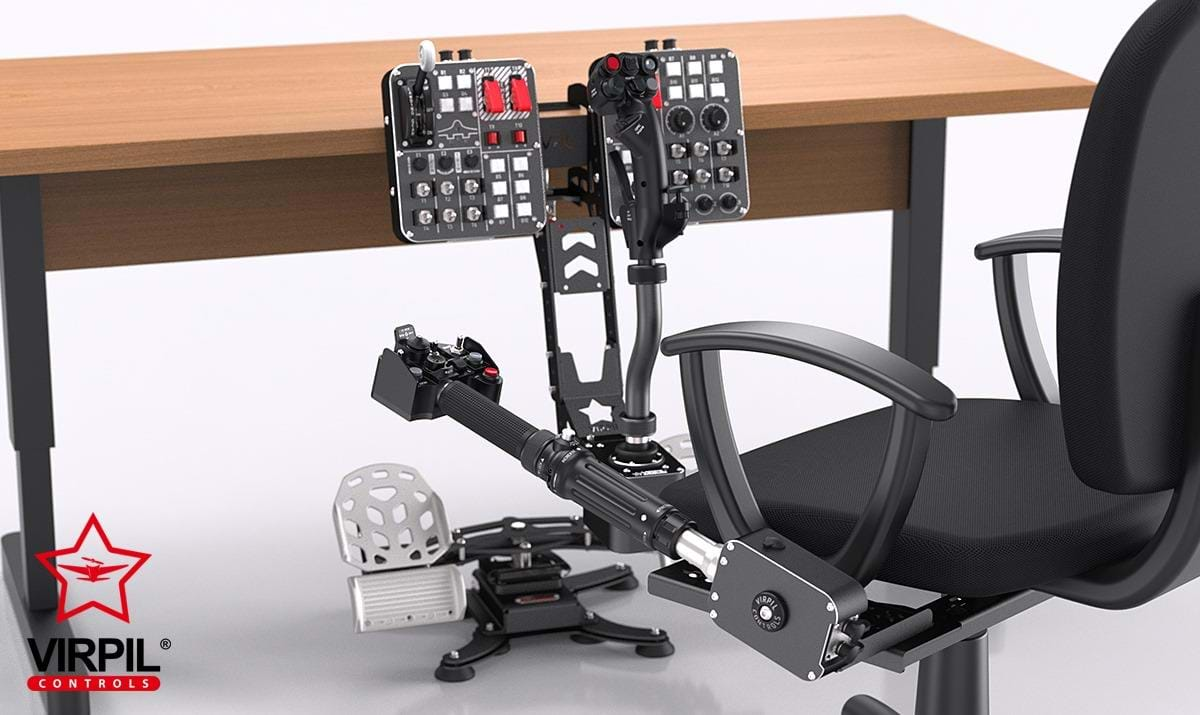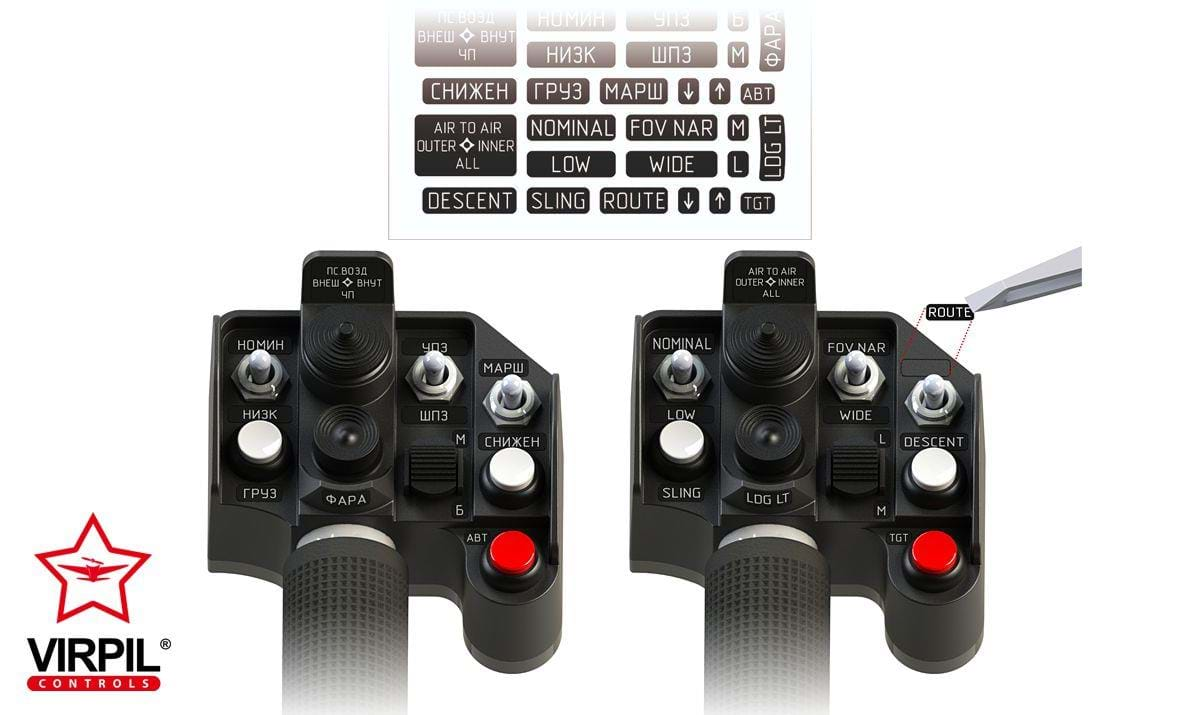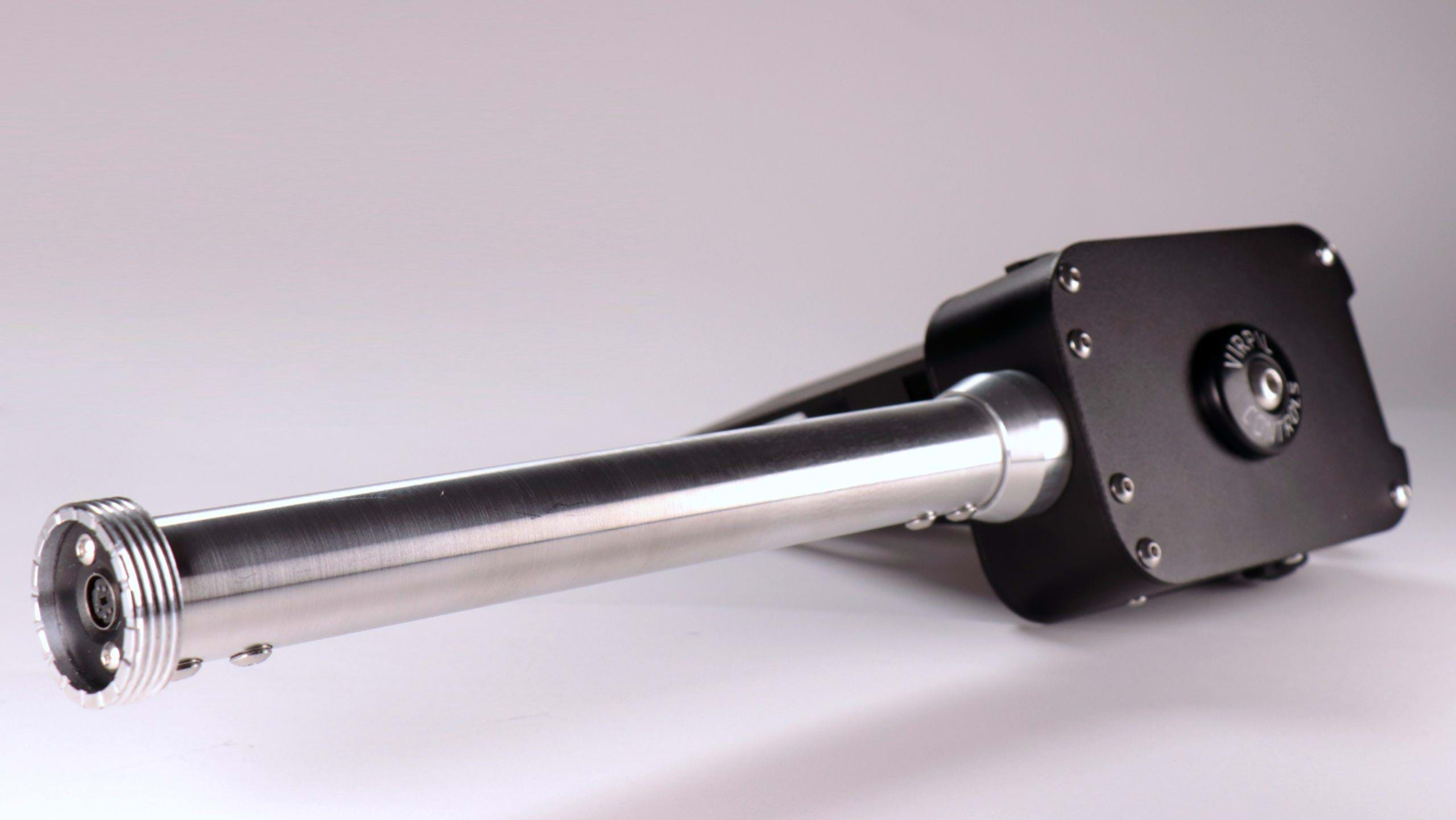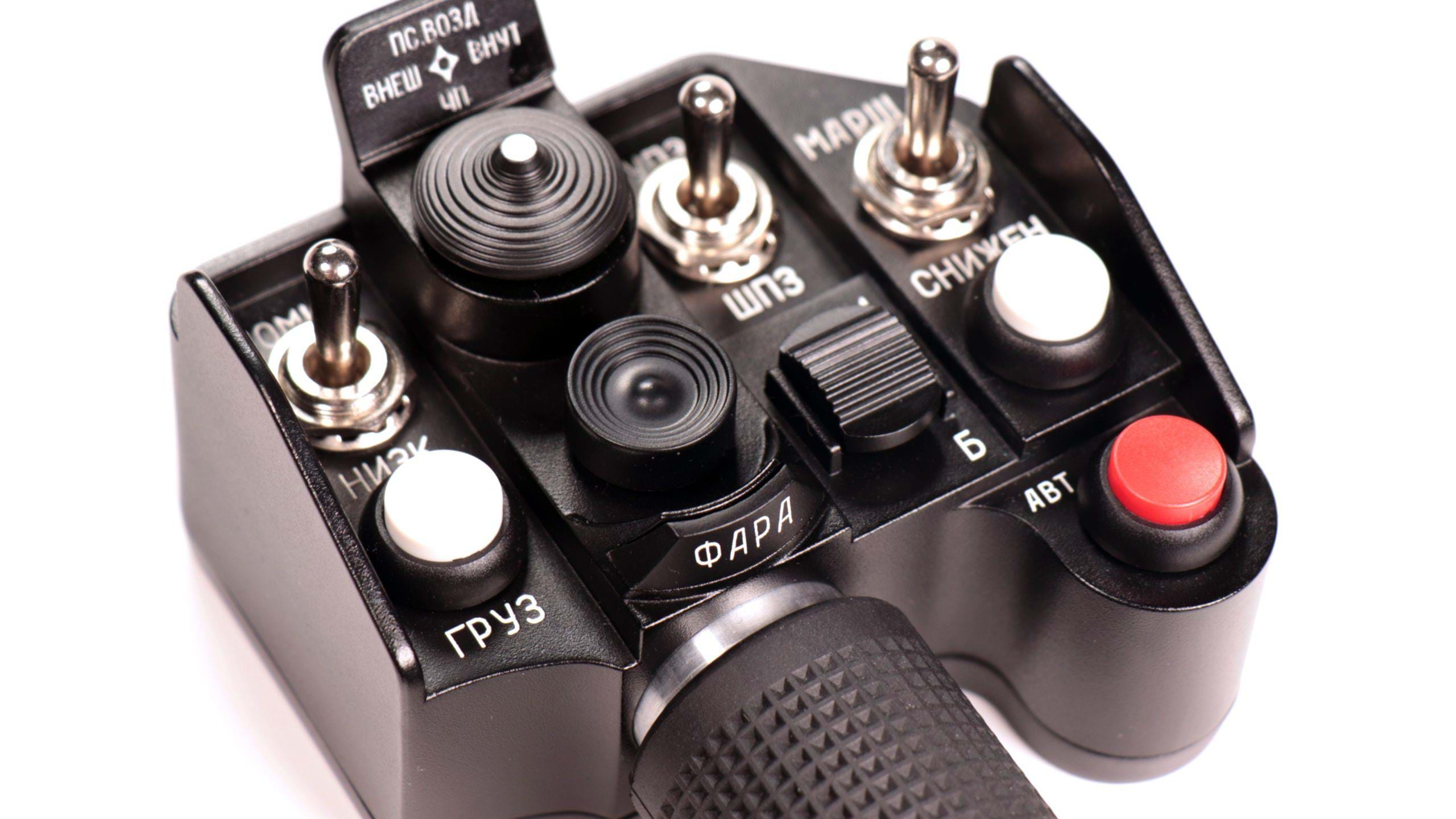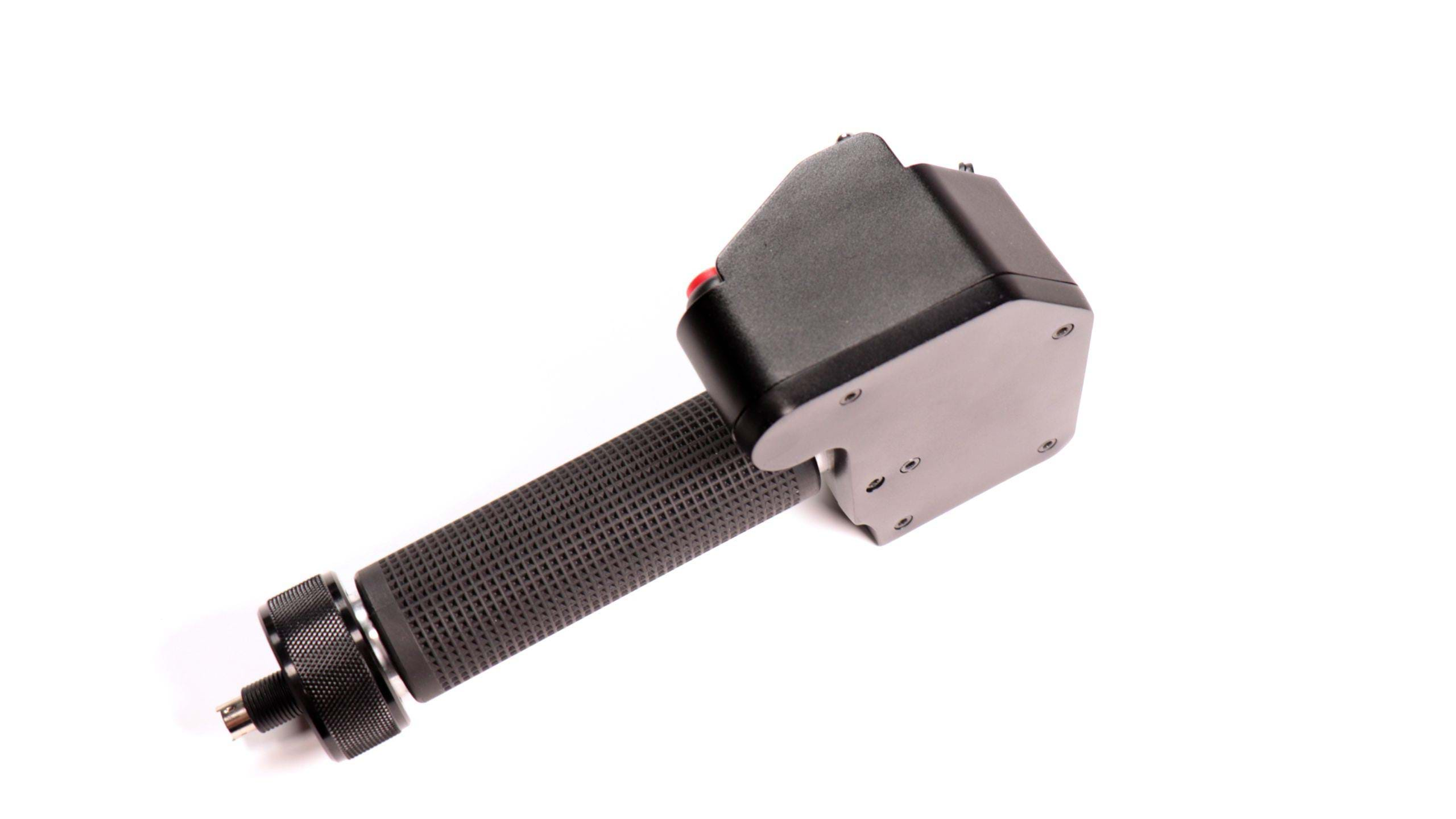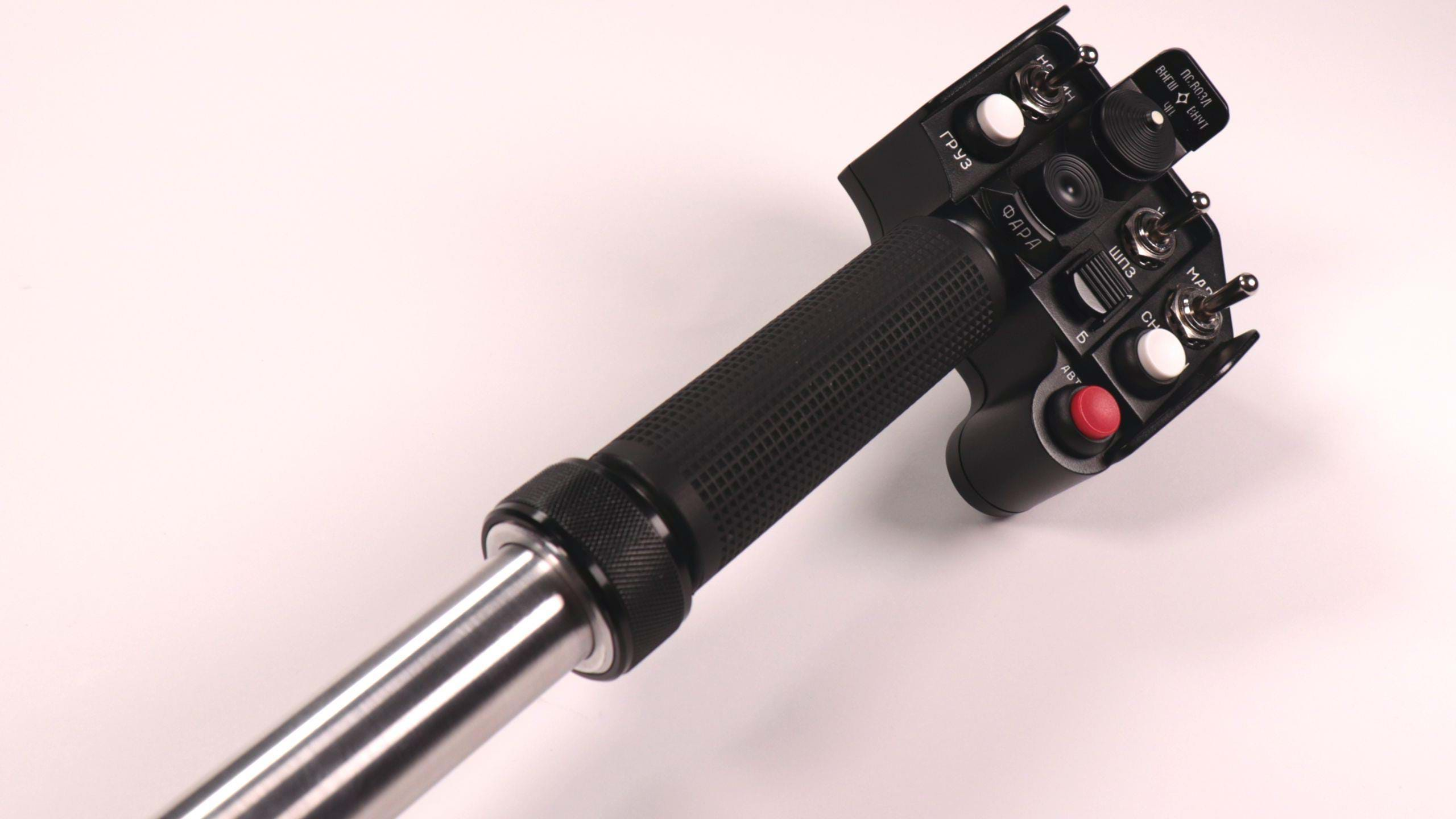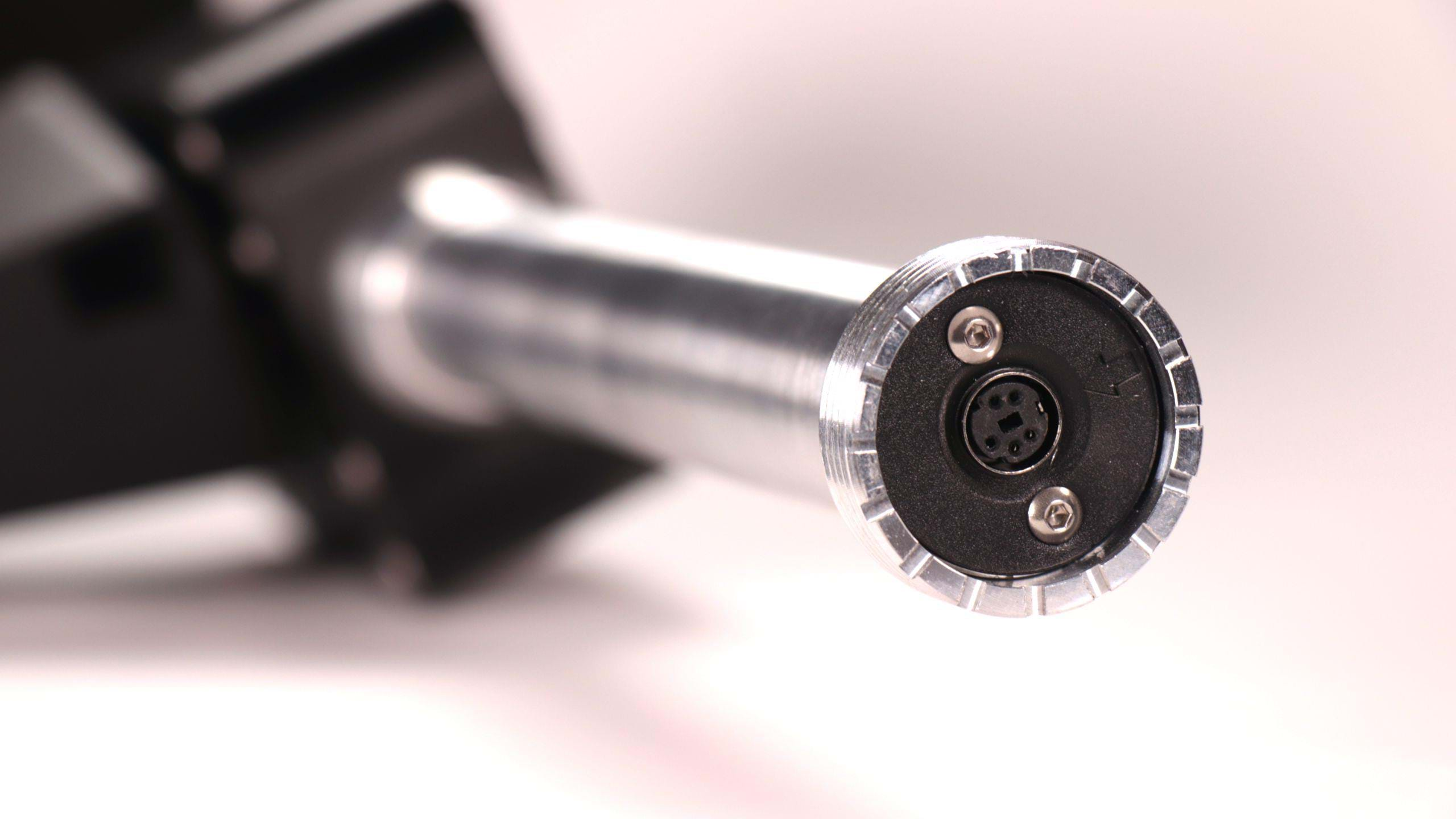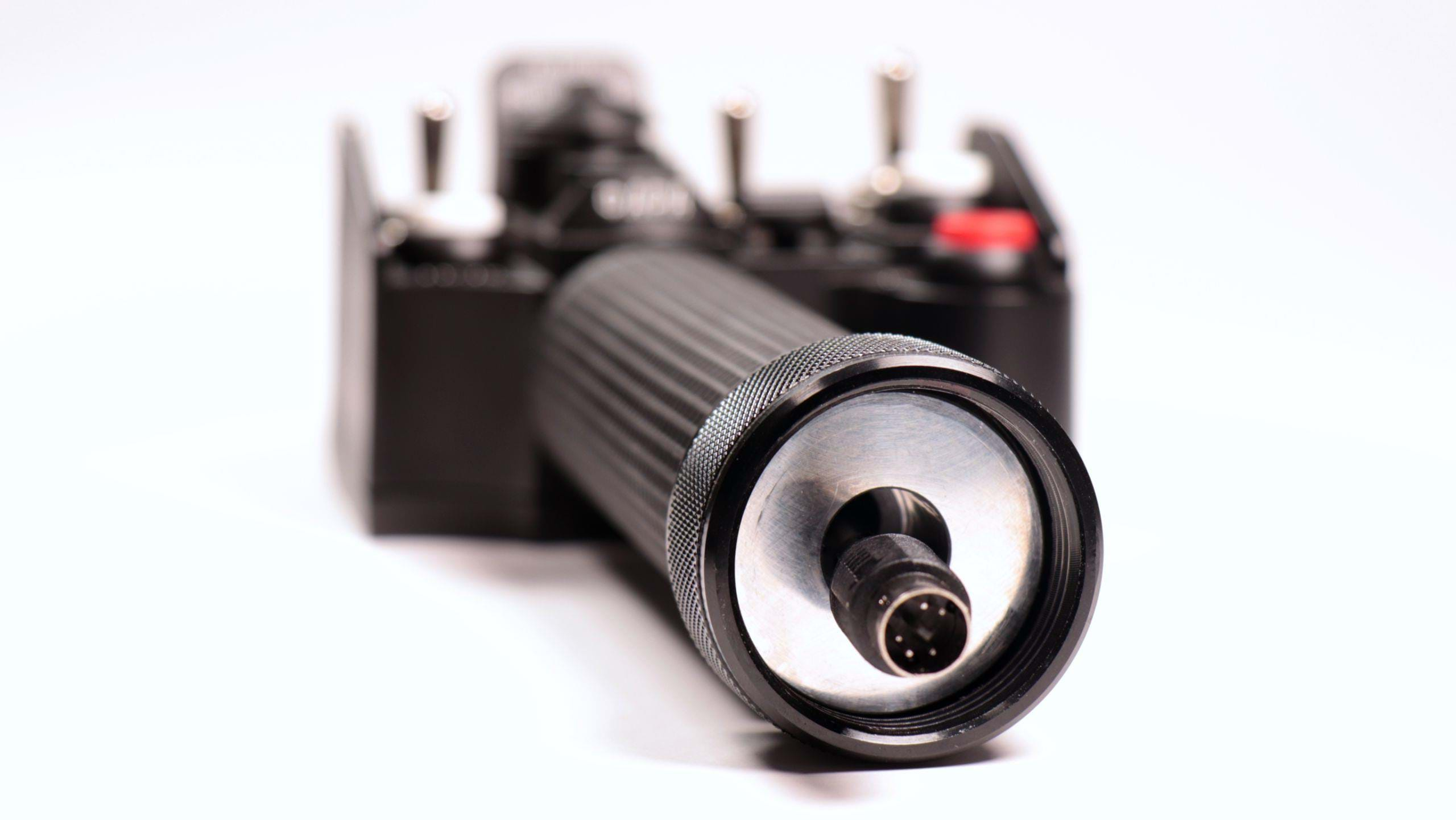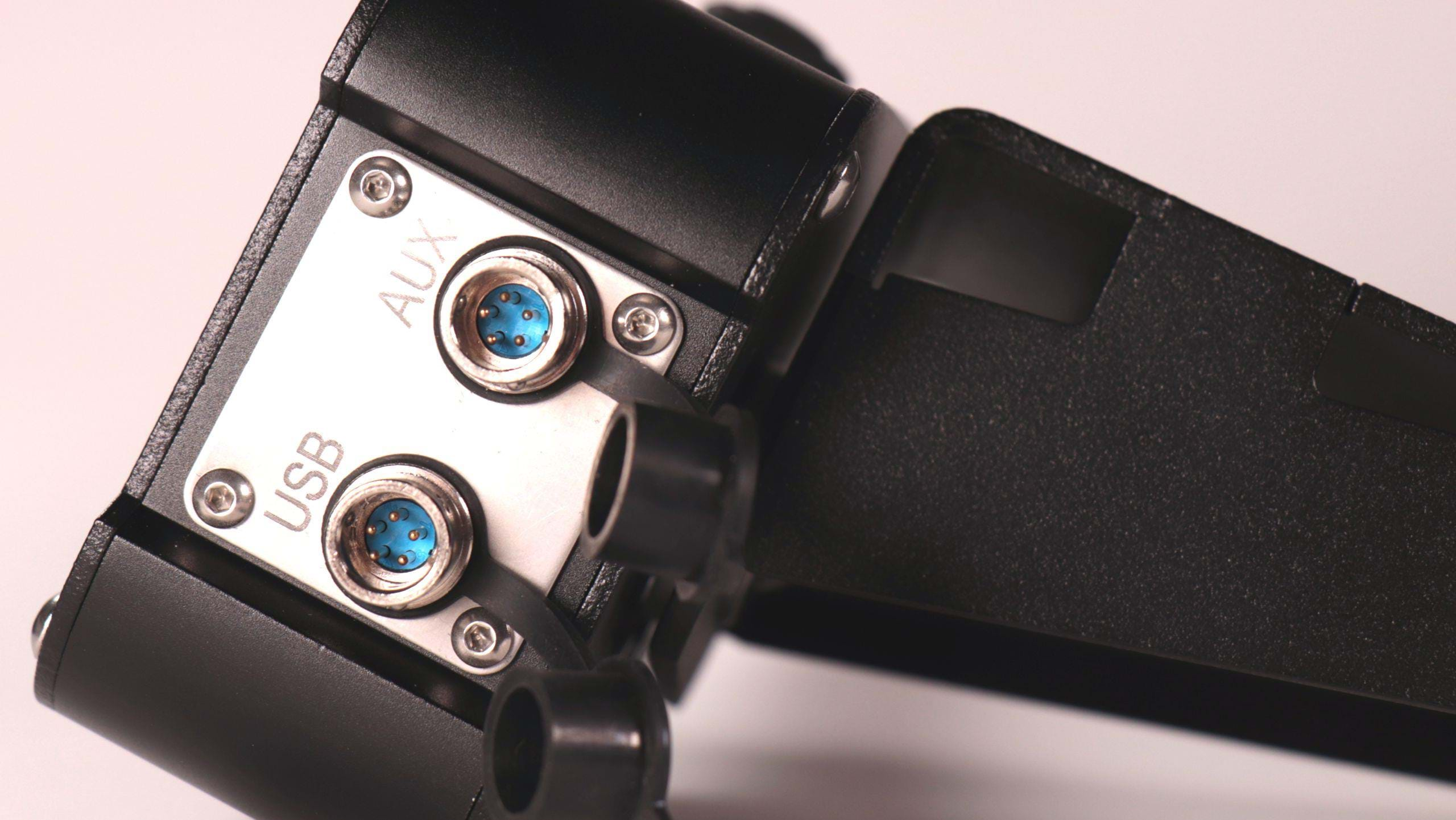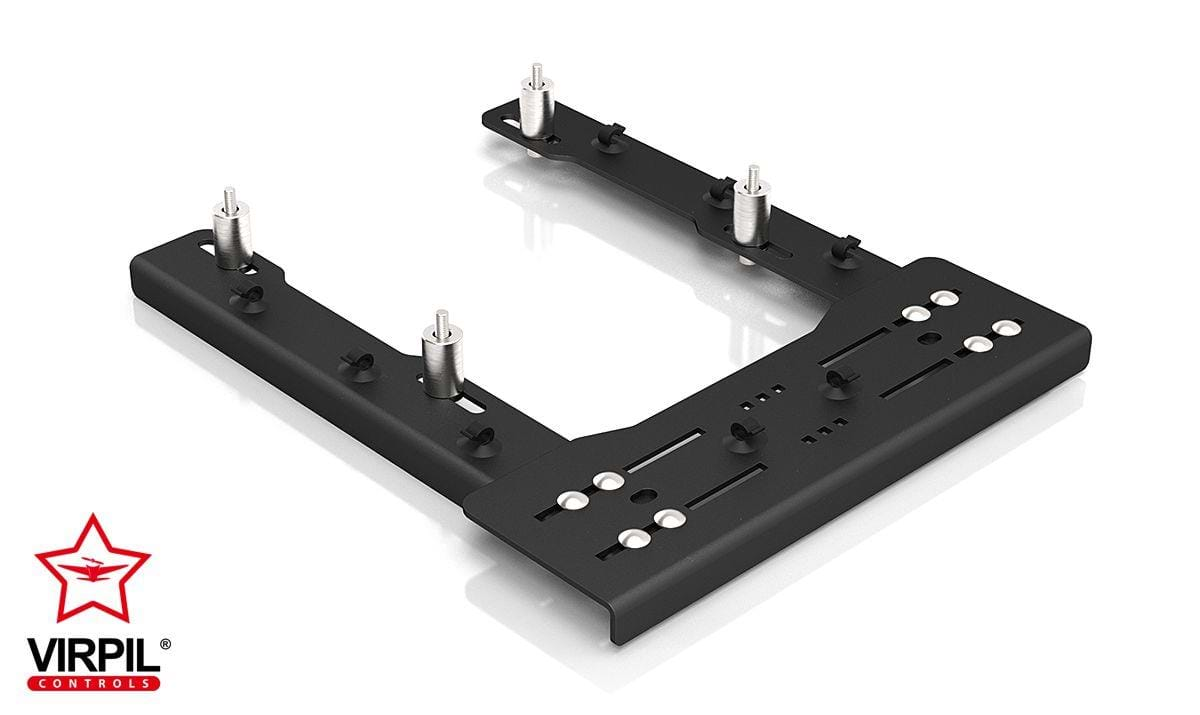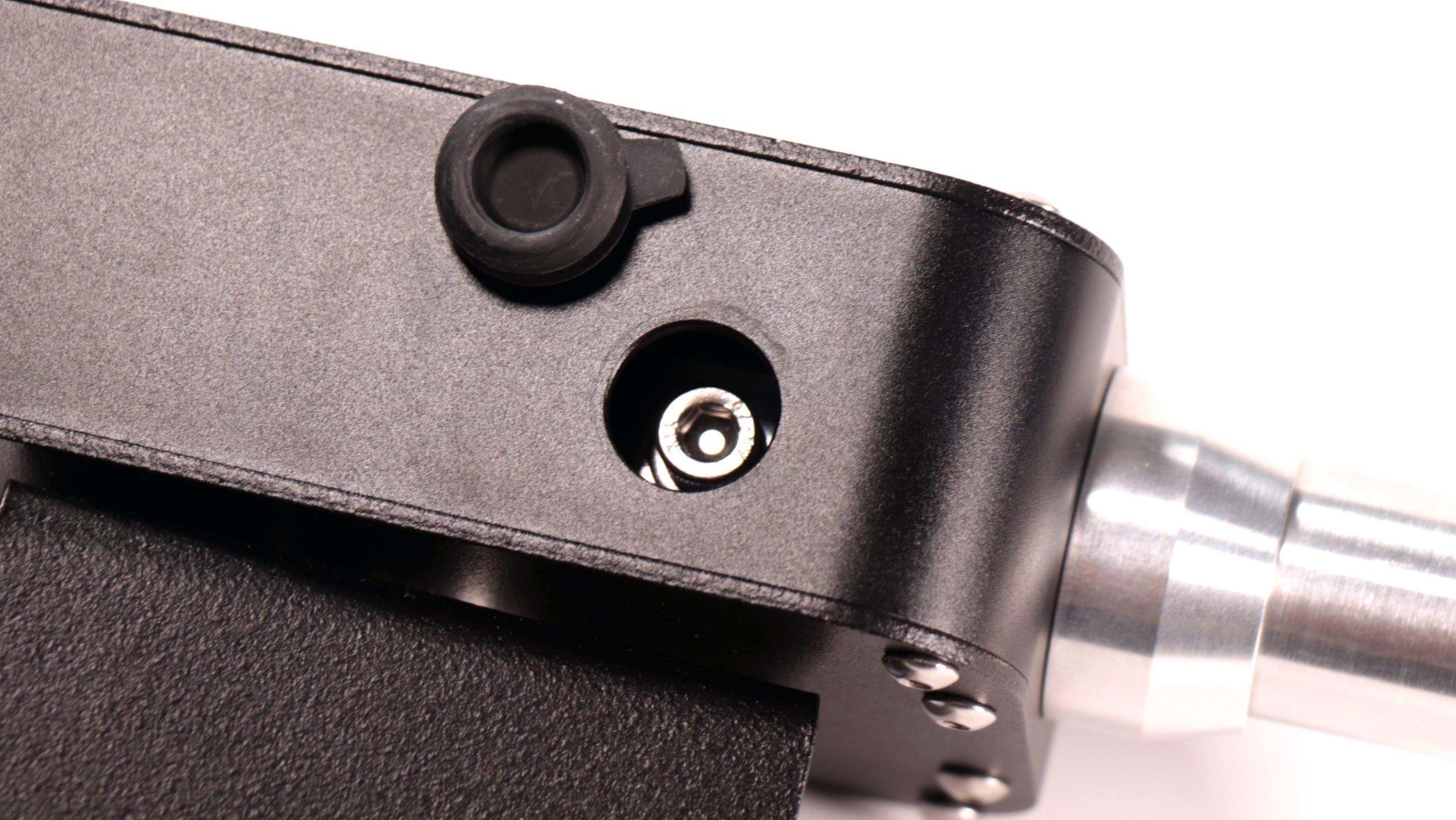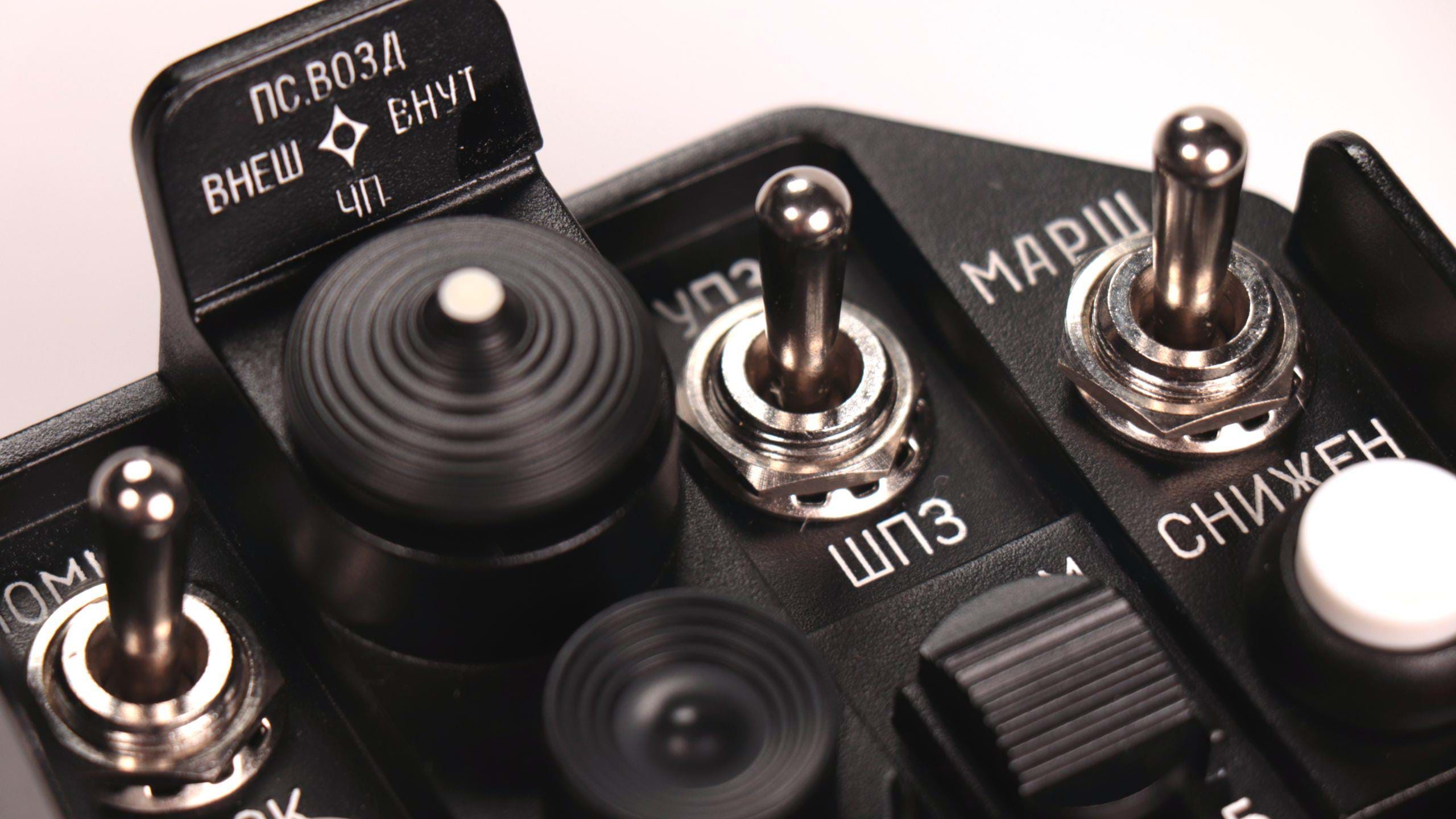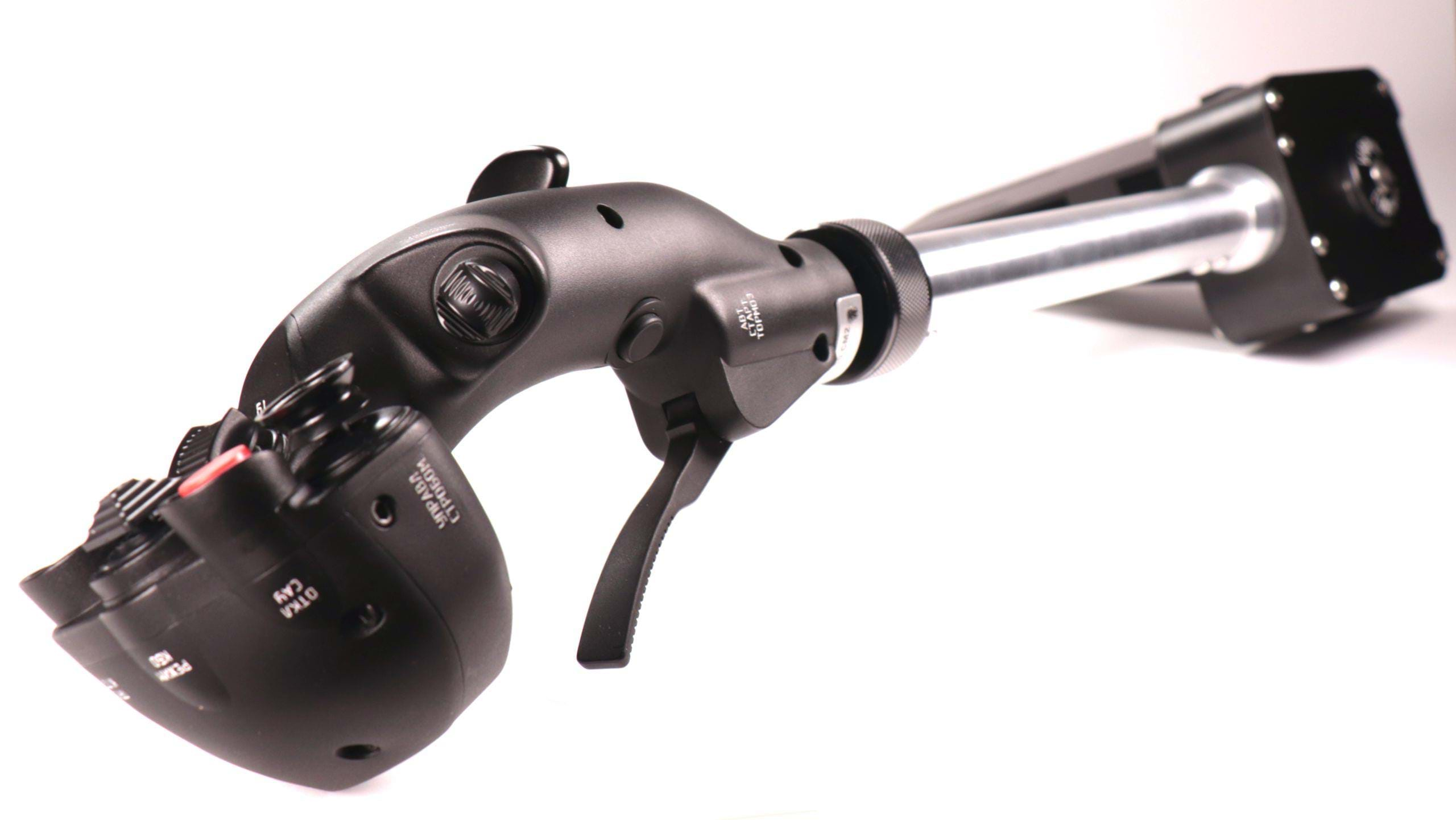Please note: after this preview, I have reviewed the VIRPIL VPC Rotor TCS Plus Base, which has a twist grip for the throttle. Once you finish reading this preview (I recommend you do it first), you can check my review of the other collective base here.
Those who do are usually more inclined to the professional side of the market, offering great solutions, but at a much higher price range and, very often, requiring a bit more of space than you may be able to afford on your simming pit.
Very often – well, most of the time, really – users tend to go with hybrid solutions. Joysticks that work for both fixed wing aircraft and helicopters , pedals that can be adapted for both styles of flying and, of course, the fighter-style throttle that has to work to both get you supersonic and take off vertically from a frigate, for example.
Collectives, though, are something that can really make a difference and a lot of rotorheads out there are very eager to get their hands on one of these things.
It’s not to say that a good stick/cyclic or pedals is of less importance but the collective… It does make a difference and most people realize it. I will be covering that in more detail a bit later.
Before we proceed, I need to go through a couple of disclaimers:
This unit was sent to me, for free, by VIRPIL, to provide my feedback and help them develop and improve the collective.
Just like with any other reviews you will find here, though, I will be completely unbiased and totally honest with both you and the manufacturer. Expect me to call them out if something is not right. But also, to praise them if they did a great job.
As such, this is not the final version of the collective. This is a pre-production unit, a prototype, but it’s pretty close to the final, production version already. If you compare the photos below with the ones from VIRPIL’s announcement , you will find some differences but they should not be so big that they render my opinion on the unit useless.
All done and cleared up, I hope. Let’s get to it.
First contact
If you have been reading the reviews I have been publishing , you already noticed I have been very impressed with the construction quality of their hardware.
This being a prototype, I wasn’t sure of what to expect.
I should know better.
The collective is extremely well built. If someone told me this was a production model, I would believe it. In fact, the only differences I can notice is the fact that, on the production units, you will get a few stickers so that you can have the description of the controls on the collective head in Russian or English.
The unit I got has everything etched in the head in Russian. Other than that, it really looks and feels like a final product.
The VPC Rotor TCS base
The base is quite simple. Since it has no twist grip, it’s pretty much a sturdy metal tube connected to the beautiful black box where the electronics are.
On the side, you will find the mounting bracket that you will be using to attach the collective to your chair, or any other base you may want to use. I recommend using something solid so that you can keep your movements fluid and precise.
The whole box rotates along with the collective shaft.
The VPC SharKa-50 Collective Grip
VIRPIL sent me a prototype for the first grip they are releasing as well. It’s a replica of the Ka-50 one, which the company smartly called the SharKa-50.
The grip is comprised of a 2 x 8-way hats (+ push), 1 x 2-way switch (+ push), 3x 3-way toggles (ON-OFF-ON) and 3 push buttons. That’s a whooping 22 button inputs total (you read it right: twenty two)! Quite impressive! It’s, obviously not the same number of buttons as their throttles but it’s still a lot of control on your left hand.
Assembling and plugging the collective in
There’s really not a lot to do here. The process is very similar to assembling a joystick. The worse part, for me anyway, is actually attaching it to the chair.
The grip connects to the collective shaft the same way the VIRPIL grips connect to the bases : plug the 5-pin mini-DIN, screw the grip ring and you’re good to go.
If you want to angle it to make it easier on your wrist, you can do so as well.
The base has 2 XS9 plugs, one to connect to the computer and another one which VIRPIL calls AUX. This is usually used to connect panels, for example.
The dreaded chair mounting
Ah yeah… Time to mount it on my poor office chair.
Unfortunately, I could not assemble it by using 2 screws, but I was lucky enough to attach it in such a way that it was pretty secure. And this is where the chair mount, which didn’t exist by then, comes in handy.
Not only that, the position on the chair I used was not the best, with the collective being way forward than I needed it to be. Since I wasn’t really in the mood of drilling any new holes on my chair, my testing was done this way.
Nothing that a few pillows on my back won’t solve for now. But I did tell VIRPIL about it and how bad that experience was, asking them for a solution since I was sure a lot of people would have the same issue.
And now you know why VIRPIL developed the Chair Mount Adapter as well!
Testing time
All right, collective was assembled and attached, pillows were in place and it was time to boot up X-Plane and get to it.
The collective was recognized easily. I assigned a couple of buttons to make it easier to pause the sim and take some screenshots if necessary. Off I went with the good, old, trustworthy and fun Cowan Simulation 500E .
The collective feels very sturdy and the movement is extremely fluid. The electronics does its thing perfectly and I was in full control the whole time. It’s not like I wasn’t expecting good quality from VIRPIL, mind you, but I wasn’t expecting to adapt so well to the collective.
It was quite an amazing first experience already. It wasn’t perfect but I could probably arrange that easily.
Setting it up for me
And so, I did. I accessed the friction control screws which you can find both on the top and the bottom of the box, protected with a rubber hatch. I didn’t find a huge difference between using one screw or the other, but I decided to split the difference between both. It was fast and I found a sweet spot that I was happy with.
I closed the lids and went back up for some more testing, this time with DCS.
Again, it was recognized and, again, it was bliss.
The more I used the collective, the more I enjoyed it. It’s really quite an amazing piece. It operates with ease and the movement is almost like butter. It does not have a hydraulic damper or anything like that, but it feels like the friction pushes your hand back enough to keep everything under control.
You are not over controlling but you aren’t under controlling it either. Not a lot of people except us that have been flying helicopters for some time understand this but having that micro-control over the collective, even more than perhaps the pedals, for example, makes such a huge, huge difference.
Collective control is one of those things that people don’t realize how much it influences your flying, especially when performing precision maneuvers or just hovering, for example. You really need that fine precision and keeping things under control and I found the VIRPIL collective was giving me just that, with more than enough collective travel to make the tiniest adjustment.
Gorgeous!
Buttons, switches, hats and other controls
Did I mention the SharKa-50 grip has twenty two(!) button assignments to use between switches, push buttons, china hats, etc?
I did? Right!
Twenty-two!
And everything works great. The only complaint I have is about the 2-way switch, which I found a bit weird to use.
Other than that, everything feels quite solid so, no complaints.
There’s something that I think I should address: the grip is quite big, and it may not be very easy to access the controls at the top of it. Expect having to take your hand out of the collective shaft to access some of the switches and the hat at the very top of it.
This is not VIRPIL’s fault as the real collective head is really big but it can be annoying for some users. I eventually adapted to it.
Alternative grips
Something that I’d like to add to this review is the fact that you are not limited to the collective grips. In fact, you can use one of the joystick grips from VIRPIL’s catalog. If you have a secondary or an extra grip, you can use it with the collective base.
While, honestly, I find it more interesting (and immersive) to use a collective head, the truth is that you can split the investment this way and get a collective right away. It won’t be perfect, but you’ll probably go from no collective at all, for a less-than-perfect one (just because it’s not a real collective head).
I have to say, though, that I tested the collective base with the VPC MongoosT-50CM2 Grip and
I just found a small issue: the brake lever was recognized as a button (which is normal since it’s usually recognized as both an axis and a button) but not as an axis. That can be fixed through the software and, after my report, VIRPIL confirmed they will add it as the default behavior.
You will still be collecting (no pun intended) the benefit of using a collective to control the helicopter rotor blades pitch which will make a world of difference if you are currently using a HOTAS throttle, for example.
But do I need a collective at all?
Ah. Good question.
The short answer is ‘yes’ but the reality may be a bit more complex than that.
As with most things related to flight simulation, there are various factors that play a role in the decision to get a collective. One of them is, of course, budget. Can you afford it?
If you can’t, you have the decision made for you. If you can afford it, though, you need to understand if the value you will take from whatever is it that you want to acquire is worth the money you will be giving to pay for it.
So, can you afford the collective?
If you read our previous news about VIRPIL opening up preorders on the collective , you found the following data:
- VPC Rotor TCS Base - 189.95 EUR
- VPC Rotor TCS Plus Base - 289.95 EUR
- VPC SharKa-50 Grip - 189.95 EUR
- VPC Collective Chair Mount Adapter - 39.95 EUR
What you will need to get the full collective is one of the 2 available bases, a grip and, very probably the chair mount adapter.
The difference between both bases is the twist grip. The VPC Rotor TCS Base is the one that I was sent and does not have a twist grip (throttle).
The VPC Rotor TCS Plus Base, you guessed it, does have a twist grip.
So:
If you don’t want/need the twist grip, you’ll be looking at spending 189.95 EUR for the base + 189.95 for the grip, for a grand total of 379.90 EUR. You will very probably need the chair mount adapter (I will be covering it later on, although I didn’t get one to test – still, I will cover it as it’s an important part). That will rise the total to 419.85 EUR.
If you do want the twist grip, that will set you back 479.90 EUR. Or 519.85 EUR if you need the chair mount. Again, you probably will need it.
Now that we have a total, the next question is: will you take enough value out of it?
That is something that only you can know, really. If you are serious about flying helicopters or if you are using it as a training tool, then yes. You will take a lot of value out of it.
If you are not flying helicopters that much, though, it may not be an amazing investment, just for the sheer fact that you will not be using it a lot.
But let’s be very honest: if you are reading this preview, you are probably taking your whirlybirds seriously or considering doing so, which means you will probably value having a collective instead of using your regular fixed-wing aircraft throttle.
This is obviously a personal decision and I wish I could give you a cookie-cutter answer. The best I can do is present you the facts and show you the path. You’ll have to walk it on your own.
I know my answer, which you will find on my conclusions, below.
My conclusions
If you are more or less serious about flying helicopter (meaning you at least split your time between helicopters and fixed wing and you really enjoy both), having a collective is something I strongly recommend you consider purchasing at some point.
Just like buying your first rudder pedals or trying VR, you really don’t understand what is it that you have been missing until you get it.
There is a reason why helicopters have the collective the way they do and it’s not just historical. The truth is that it works in so many levels. The travel range of the lever, the precision, the way it’s set up, it all helps you to have better control over your helicopter.
And VIRPIL is delivering all that in this package. As with the rest of their products , VIRPIL’s collective is of great quality (even if I got a pre-production unit, it’s amazing). The precision of the components is top notch and it all felt very good.
I agree that the price may be a bit steep. Let’s be honest, we are realistically talking about a 500 Euro+ investment if you go with the twist grip base (which I would go with for sure). But, again, if you are at least semi-serious about helicopters, I would highly recommend you take a look at it and consider getting it.
Do you need a collective?
I do. If I had a great joystick and pedals that I was using for helicopters (and/or other aircraft as well), I would definitely get this.
Head out to VIRPIL’s website and make sure to take advantage of the 10% catalogue-wide discount for all orders that contain a collective base + grip!

